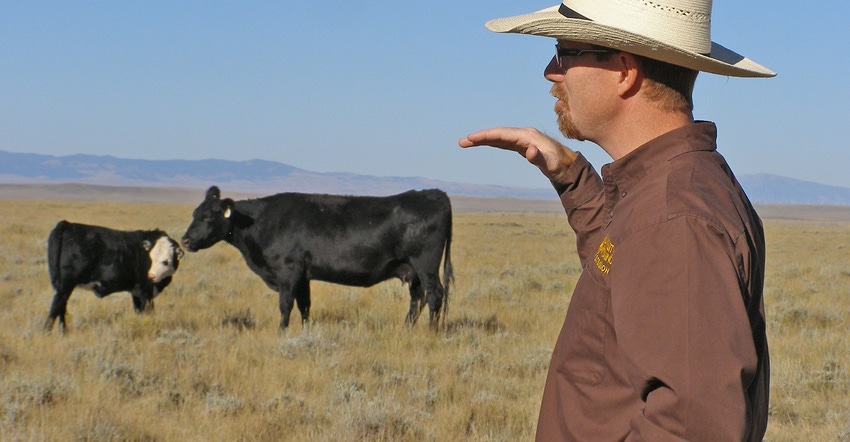October 26, 2017

Editor’s note: This is the third story in a series exploring the benefits of fitting the cow to the environment.
Given the forecasts of future drought cycles, it is imperative that cattle producers and their technical advisers consider a suite of integrated adaptation strategies, including matching the animal to the environment.
That’s according to research by University of Wyoming Extension range specialist John Derek Scasta, Oklahoma State University Extension beef cattle specialist David Lalman and Oregon State University Extension livestock and range agent Leticia Varelas.
Because rangeland forage resources are subject to extreme precipitation variability, the primary adaptation strategies should optimize the plant-livestock interaction and incorporate long-range planning.
Given the recent trends in beef prices, and selection for milk and growth combined with drought forecasts, it is important that rangeland grazing enterprises minimize and control their cost of production without sacrificing reproductive efficiency, according to the researchers.
Managers should consider integrating contemporary livestock selection strategies to adapt and plan for the negative impacts of drought, while also taking into consideration the normal to wet precipitation years.
Scasta conducted his portion of the multistate study on dryland range in southeast Wyoming.
Fortuitously, weather conditions varied widely over the four years from 2011 through 2014 — from normal to severe drought to abnormally wet.
“Under the worst conditions, the efficiency of the small cows was always higher than the efficiency of the large cows under the best conditions,” Scasta says. “This goes back to maintenance costs: How much forage does a cow have to consume to wean a calf?”
The study found that the smallest cows required 3,927 pounds of forage (18.7 pounds per day) over the course of a 210-day birth-to-weaning period, while the largest cows needed 4,998 pounds (23.8 pounds per day).
This is a difference of 1,071 pounds of dry forage matter for the largest cows compared to the smallest.
“Large cows need a lot more forage, but year-in, year-out they are not weaning bigger calves,” Scasta says.
Efficiency and cow size
In developing the study, he notes, “We created an efficiency metric to compare the weaning weight of calves relative to the weight of their mothers. Many ranchers set a goal for their cows to wean 50% of their body weight, and in our study the only cows that ever did that were the smaller ones in the 1,000- to 1,100-pound range.”
Since many ranchers have gone from 1,000-pound cows up to 1,400-pound animals over the past four to five decades, could they go too far in the other direction in terms of cow size and efficiency?
“We can run into a ditch with cows that are too large, and we could also run into a ditch with cows that are too small,” Scasta says. “Rumen size could play into this, as was evident by the results of our study during the drought year.”
So what can ranchers take from the study?
“Moderate-sized cows might offer a rumen-size advantage, but they are still weaning a larger calf,” he says. “That’s why I think staying in the middle might be the sweet spot, since you can’t manage cow size based on any particular year or particular weather condition — which is supported by other studies out of Montana,” Scasta adds.
Waggener writes from Laramie, Wyo.
About the Author(s)
You May Also Like




